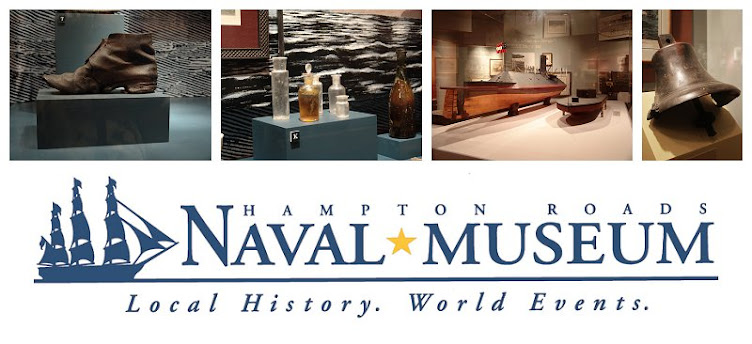To commemorate the 75th anniversary of the end of World War II, we asked our colleagues at our sister museums for some interesting artifacts that highlight unique aspects of the Navy during the war. To close out this series, we have an artifact from our sister museum, the National Museum of the American Sailor in Great Lakes, Illinois.
 |
| USS Bennington (CV 20), with camouflage paint, preparing to go to war. (Naval History and Heritage Command) |
By Jennifer Steinhardt and Samantha Belles
Archivist and Collection Manager at National Museum of the American Sailor
It is difficult to select only one item from an artifact collection that captures so many important historical stories about the Navy’s enlisted Sailor. One such item from the National Museum of the American Sailor’s collection is Fireman 1/c (EM) Nicholas Saroukos’ journal. Born in Wilmington, Delaware in 1920, Saroukos enlisted into the United States Navy in 1942. As the Navy forbade American service members to keep personal journals during World War II, Saroukos’ account as an electrician aboard the aircraft carrier USS Bennington (CV 20) from January-April 1945 provides a rare contemporaneous firsthand account of what it was like to be a Navy Sailor during World War II.
 |
A page from Saroukos' journal. Of note is the reference to President Franklin D. Roosevelt's death, as well as to kamikaze attacks (off of Okinawa). (National Museum of the American Sailor)
|
 |
A sailor keeps an eye on a control board below deck aboard USS Bennington in 1945. (Naval History and Heritage Command)
|
In his journal, Saroukos first recounts the USS Bennington (CV 20) tying up to the USS Utah (BB 31) “Had my first glimpse of the historic port of Pearl Harbor. We tied up to the______ of the U.S.S. Utah which is lying on the bottom of the harbor.” Throughout his journal, he continues to detail his life aboard the ship. One notable part of the journal is when Saroukos discusses the disadvantages of having a below deck battle-station. He states, “that nothing can be done when a plane is diving at us but lie on the deck face down…”
 |
The wreck of USS Utah (BB 31) at Pearl Harbor, Hawaii in 1944 during salvage operations. The battleship was one of those sunk during the Japanese attack on December 7, 1941. (Naval History and Heritage Command)
|
This personal and important story is one of many in our collection. By keeping a journal, Nicholas Saroukos provides a glimpse into the daily life of enlisted sailors, something the National Museum of the American Sailor strives to preserve and make available to everyone each and every day.
















